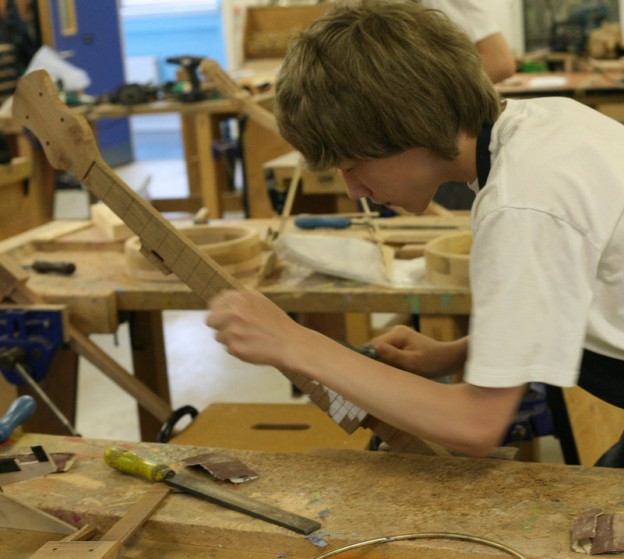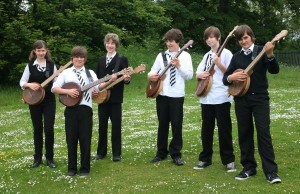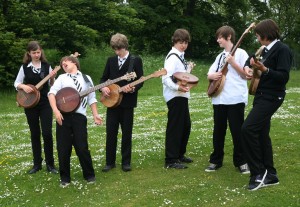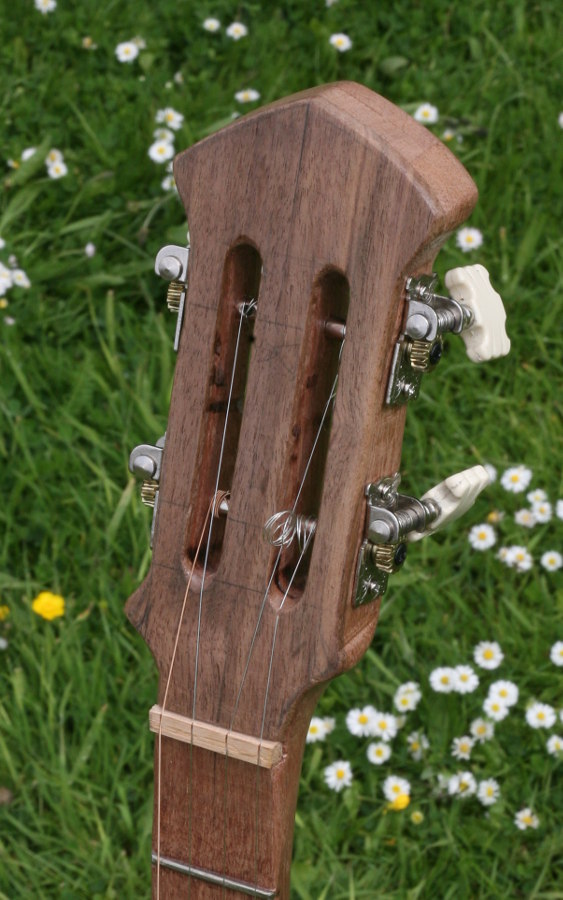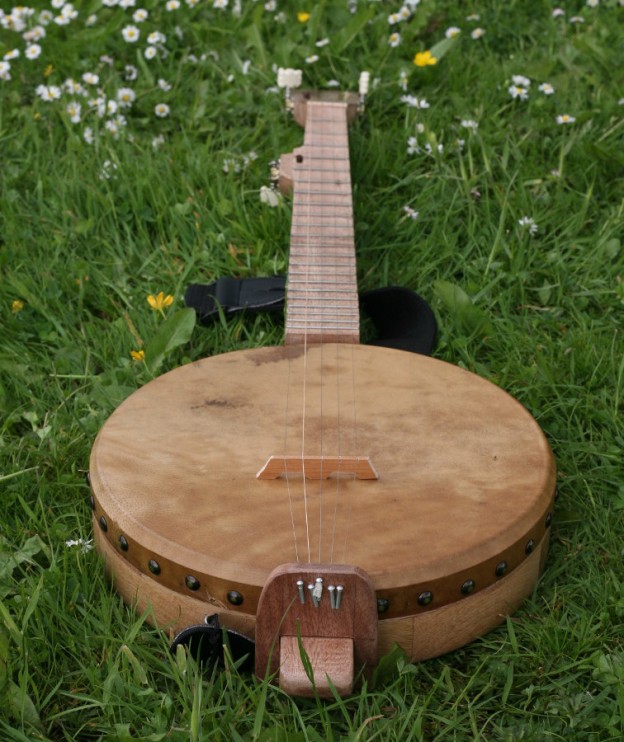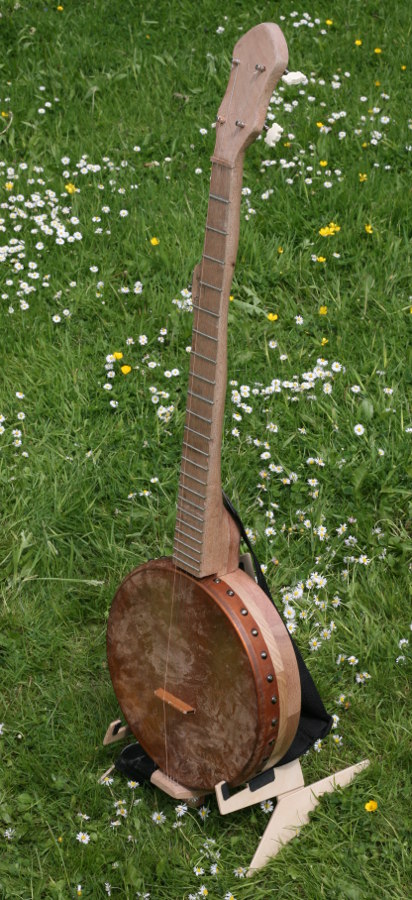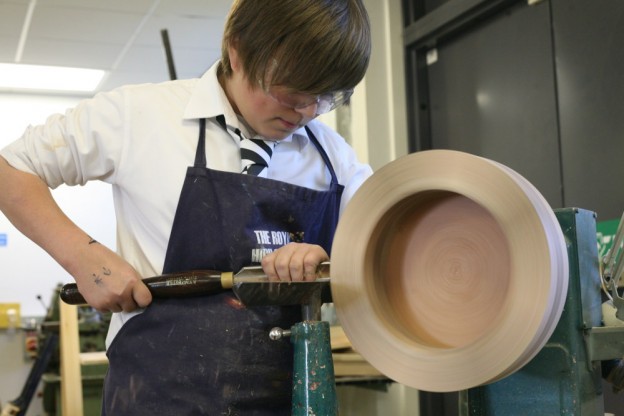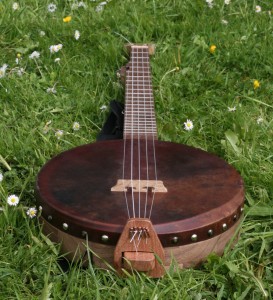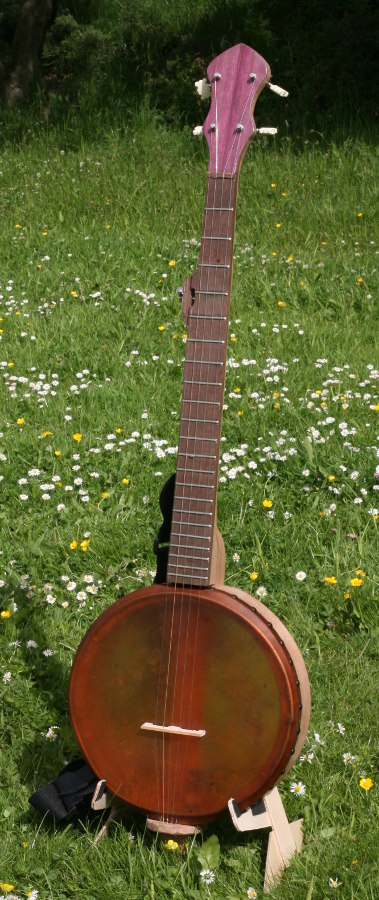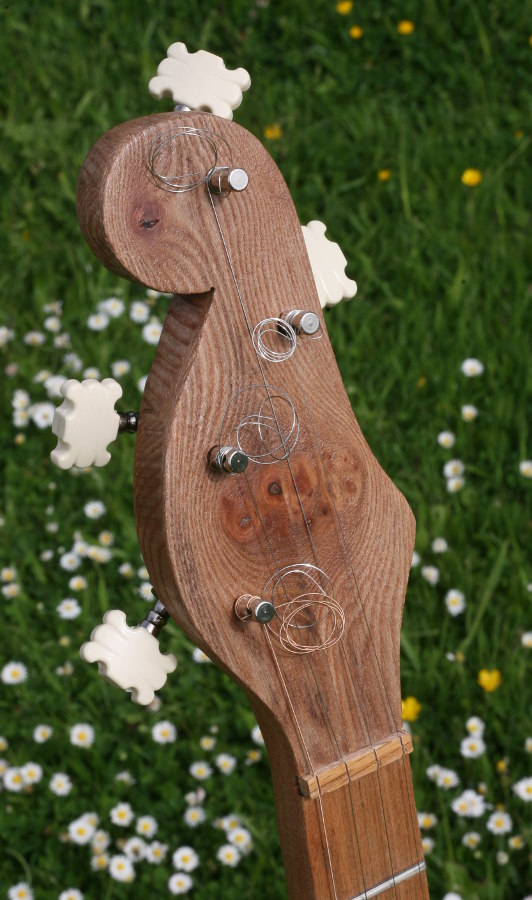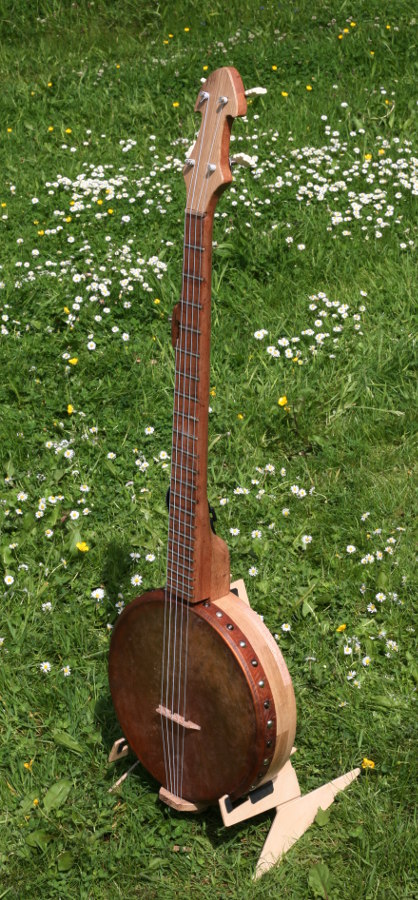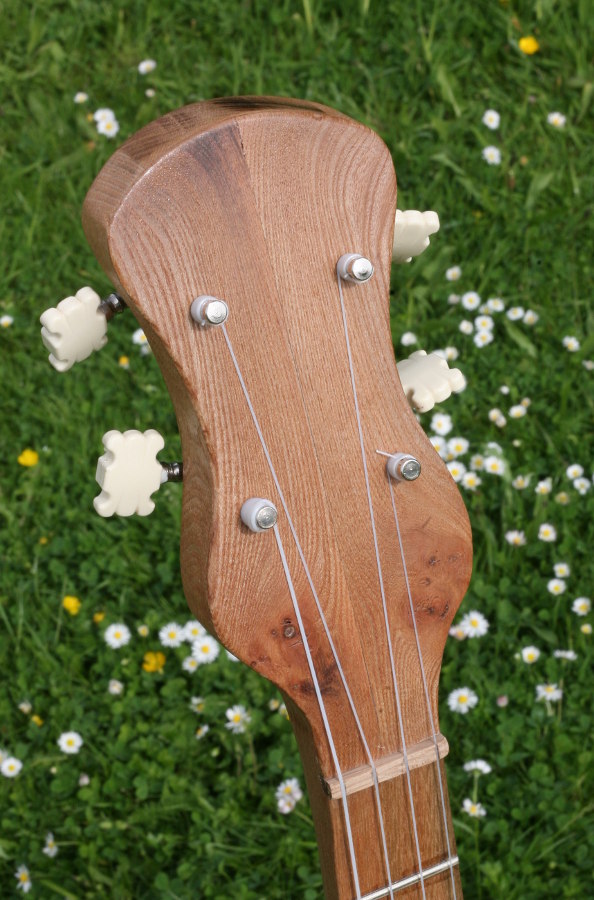This project is the blueprint for what I hope will be achieved with BanjoWorks.
In May 2012, the normal teaching timetable at The Royal High School, where I then taught, was suspended and pupils were given the opportunity to try other activities. I offered eleven S2 and S3 pupils the chance to build a banjo in five days. Nine out of the eleven completed their instruments by the end of the week. The two who didn’t were each absent due to illness for at least one day during the week but completed their banjos afterwards.
To ensure that pupils would succeed in completing their banjos within the week required a fair amount of preparation and a small amount of pre-building by the teacher. A more realistic, leisurely time frame, with pupils carrying out almost all work themselves, is probably seven to eight days.
Some workshop photos were taken during the week and are available at Royal High CDT’s Flickr account:
https://www.flickr.com/photos/cdtlog/sets/72157630027181072/
Sixth year pupil Stuart Clark visited the workshop on the Friday and made the following video recording:
The week after the event, some of the pupils assembled to have group photos taken. Here is a video recording made then:
Here are two group photos:
Photos and video recordings of pupils’ banjos are available as follows:
